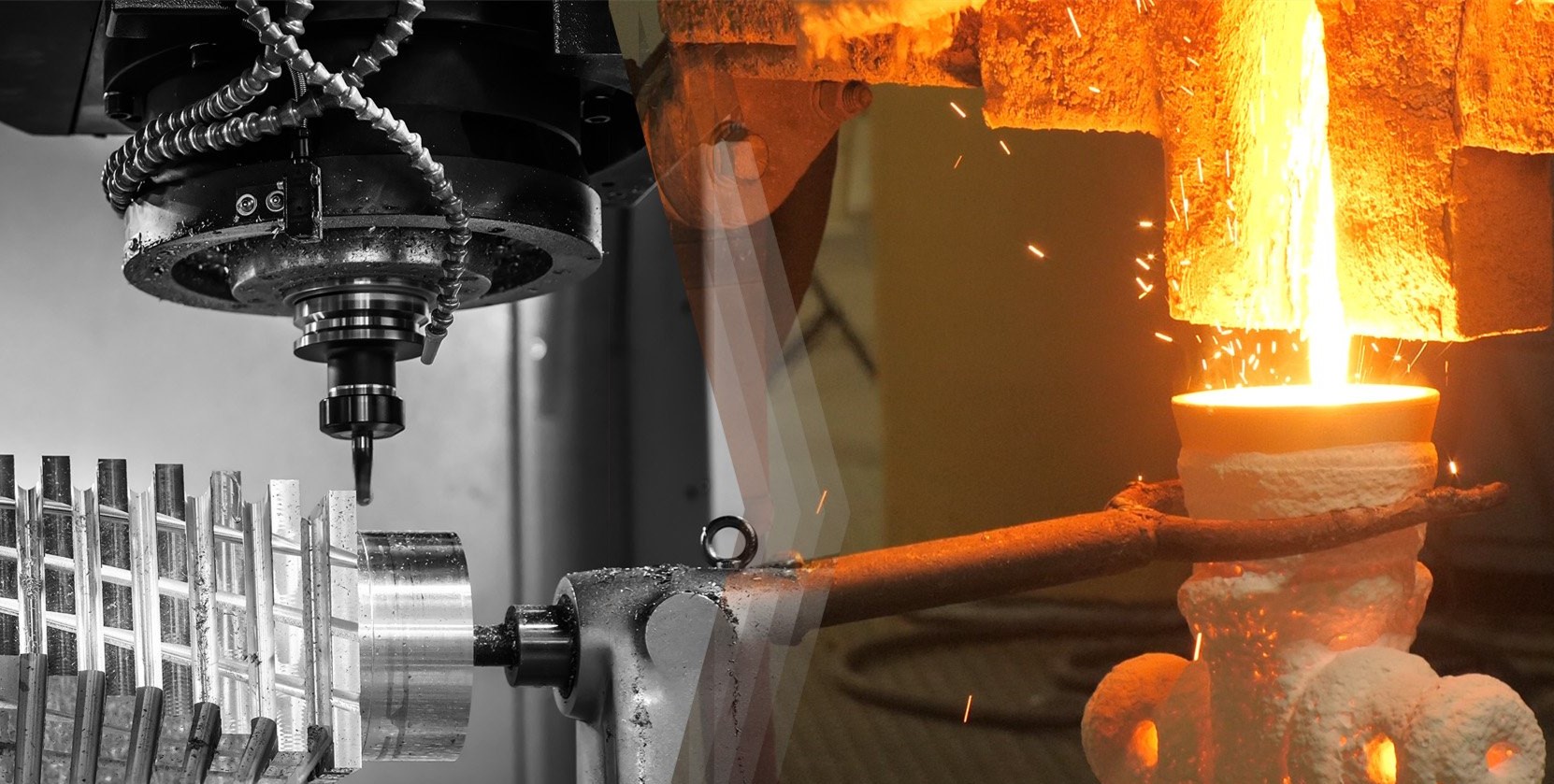
CNC machining and investment casting are two prominent manufacturing processes used for producing metal parts. While they share some similarities, they also have distinct differences in terms of techniques, materials, applications, and advantages and disadvantages. This article aims to provide a comprehensive analysis of CNC machining and investment casting, highlighting their commonalities and variations.

CNC Machining:
CNC machining involves the use of computer numerical control (CNC) systems to control machine tools and remove material from a solid block to achieve the desired shape. It offers high precision and dimensional control, making it suitable for a wide range of materials, including metals like aluminum, steel, and copper. CNC machining finds applications in various industries such as automotive, aerospace, and electronics. Its advantages include the ability to produce complex geometries, high accuracy, and the flexibility for small to medium production runs. However, CNC machining can be time-consuming and may have limitations in achieving intricate internal structures.
Investment Casting:
Investment casting, also known as lost-wax casting, is a process where a wax pattern is coated with a ceramic shell. The shell is then heated to remove the wax, leaving behind a cavity that is filled with molten metal. Once the metal solidifies, the ceramic shell is broken to reveal the final cast part. Investment casting is compatible with a wide range of materials, including ferrous and non-ferrous alloys, and it finds applications in industries such as jewelry, aerospace, and medical devices. The process allows for the production of complex shapes, intricate details, and excellent surface finishes. Investment casting is particularly advantageous for creating parts with internal features and thin walls. However, it can be costlier compared to other manufacturing methods, and the process requires more time due to the multiple steps involved.
Similarities between CNC Machining and Investment Casting:
Manufacturing Process: Both CNC machining and investment casting are used to manufacture metal parts.
Material Compatibility: They can work with various metals, including aluminum, steel, and copper.
Precision and Dimensional Control: Both methods offer high precision and allow for tight dimensional control.
Customization Potential: CNC machining and investment casting can be customized to meet specific design requirements and customer needs.
Differences between CNC Machining and Investment Casting:
Process Principles: CNC machining involves material removal, while investment casting involves the creation of a mold using a wax pattern.
Manufacturing Complexity: CNC machining is suitable for producing simple to complex geometries, while investment casting excels in producing parts with intricate internal structures.
Production Volume: CNC machining is well-suited for small to medium production runs, while investment casting is more suitable for low to medium production volumes.
Surface Finish and Detail Preservation: Investment casting provides excellent surface finishes and preserves intricate details, while CNC machining may have limitations in achieving intricate internal features.
Material Compatibility and Application Scenarios:
CNC Machining:
Materials: CNC machining is compatible with various metals, including aluminum, steel, titanium, and brass.
Applications: It finds applications in industries such as automotive, aerospace, electronics, and prototyping, producing parts like engine components, aircraft parts, and intricate prototypes.
Investment Casting:
Materials: Investment casting supports a wide range of materials, including stainless steel, carbon steel, aluminum alloys, and superalloys.
Applications: It is used in industries such as automotive, jewelry, aerospace, and medical devices, producing parts like turbine blades, jewelry pieces, and intricate medical implants.
Advantages and Disadvantages:
CNC Machining:
Advantages: CNC machining offers high precision, the ability to produce complex geometries, and good surface finishes. It is suitable for small to medium production runs and provides design flexibility.
Disadvantages: CNC machining can be time-consuming, especially for complex parts, and may have limitations in achieving intricate internal structures.
Investment Casting:
Advantages: Investment casting allows for the production of complex shapes, excellent surface finishes, and intricate details. It is particularly advantageous for parts with internal features and thin walls.
Disadvantages: Investment casting can be costlier compared to other manufacturing methods, and the process requires more time due to multiple steps involved.
Conclusion:
CNC machining and investment casting are valuable manufacturing processes for metal parts. While CNC machining excels in precision, complexity, and customization potential, investment casting offers the advantage of producing parts with intricate internal structures and excellent surface finishes. Understanding their similarities, differences, material compatibility, and application scopes can help manufacturers choose the most suitable method for their specific needs.